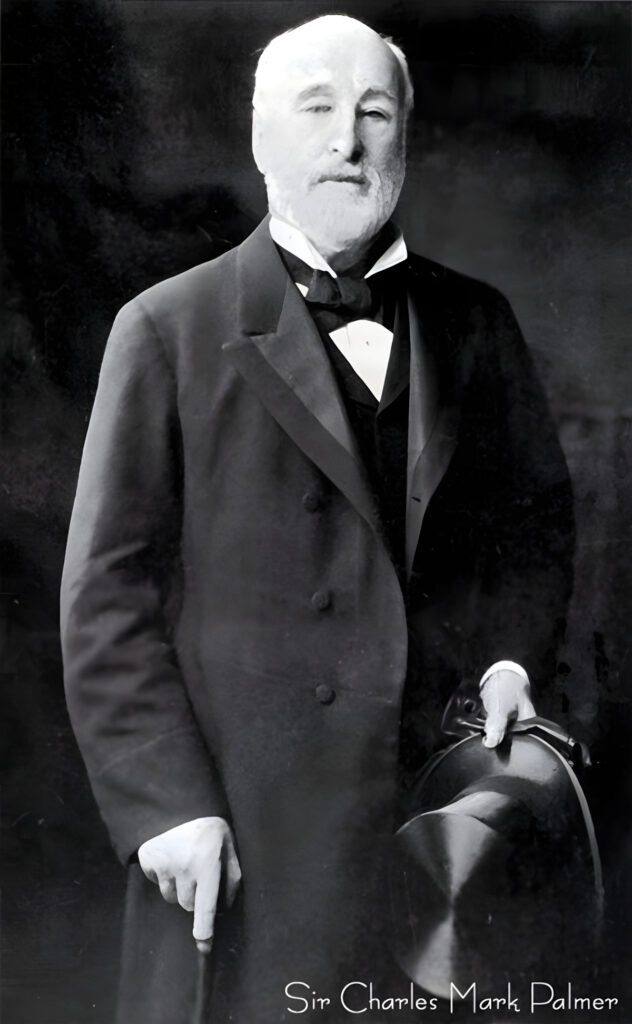The Rise Fall and Legacy of Palmer Shipbuilding
In 1851, brothers Sir Charles Mark Palmer and George set sail on a bold venture – establishing a shipyard in the small village of Jarrow, located on the banks of the River Tyne in South Tyneside, England. Embodied within the land of a former shipyard previously used by Thomas Metcalfe for the building of wooden sailing ships during the Napoleonic Wars.
A Town Built on Steel
From its humble beginnings, Palmer Shipbuilding quickly rose to prominence, becoming a global force in the industry. The company’s founder, Sir Charles Mark Palmer, along with his brother George, established Their shipyard on the banks of the River Tyne that would launch over 900 ships during its 80-year lifespan.
Early Beginnings and Rapid Expansion
Palmer’s first ship, the iron paddle tug Northumberland, launched in April 1852, was a small vessel by industry standards. However, this early success paved the way for remarkable growth. By 1909, Palmer Shipbuilding had expanded significantly. Meticulously documenting each creation.

The company not only boasted berths for ship construction but also established blast furnaces, iron and steelworks, and a boiler and engine works on-site. The vast dock stretched nearly three-quarters of a mile along the banks of the River Tyne, a testament to the scale of their operations.
For nearly a decade in the late 1800’s, they held the title of Britain’s top shipbuilder, solidifying their place as giants in the industry.
Impact on Jarrow
The Palmer Shipyard became the lifeblood of the small village of Jarrow, which experienced remarkable population growth during the early 1900’s, evolving into a town with over 40,000 residents. The shipyard provided employment for most of the town’s inhabitants. However, the Great Depression and the early 1930’s brought immense challenges, leading to economic hardship and decline in Jarrow.
A Lasting Legacy
The story of Palmer Shipbuilding is intertwined with the history of Jarrow. Sir Charles Mark Palmer and his brother George left an enduring legacy – a testament to their vision, hard work, and the dedication of the workforce that built some of Britain’s most renowned ships.
The historical context of the Palmer Shipbuilding Company’s rise to prominence and its profound impact on Jarrow’s economy and identity underscores the remarkable journey and legacy of Sir Charles Mark Palmer and his brother George in the shipbuilding industry.
After the closure of Palmer’s in 1933 Palmer’s was acquired by National Shipbuilders Security Ltd. (a UK Government body established in 1930) going on to demolish the site In 1935. However, the 175 feet Hebburn dry dock was taken over by Vickers-Armstrong and continued for some time as Palmer’s Hebburn Ltd. However, The fall of the Palmer shipyard giants is synonymous with the Jarrow March being born out of the fall of Palmer shipbuilding.
Further Exploration
For those interested in learning more about the Palmer Shipyard, Philip Strong’s family website gallery. offers fascinating insights. He provides impressive photographs, historical maps, showcasing the richness of this industrial past.along with an aerial Views of Palmer’s Shipyard. For those who are also keen on genealogy he walks you through his family history tree and shows what can be done when you put your mind to it.
The family website has opened again to visitors after succumbing to hackers last year. The original designer has worked hard to make the website save for visitors to view with confidence. I wish then every success for the future.